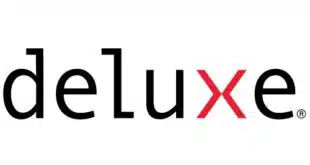The rapidly increasing importance of electronic payment channels is behind the recent surge in membership at NACHA-The Electronic Payment Association, according to the Herndon, Va.-based association's chairman. Four financial institutions have joined NACHA as direct members?meaning they get a vote on rules governing the automated clearing house?so far this year, and five have joined in the past six months. This flurry of memberships comes after no new members were admitted in 2005 and only the one last year. NACHA now claims 44 direct members, including 25 financial institutions and 19 regional payment associations. This month, SunTrust Banks Inc. and Fifth Third Bancorp have joined. Washington Mutual Inc. joined in March, and Synovus Financial Corp. in January. The lone new member in 2006 was BMO Capital Markets Corp., in October. “People are seeing the light,” says Steve Ellis, executive vice president of the wholesale services group at Wells Fargo & Co. and NACHA chairman. “It's not about moving paper any more.” And electronic transactions, he argues, are not simply replacing paper-based payments, but are also occurring where no paper item was involved in the first place. “It's not a substitution, it's an additive game,” he says. “People want to be involved.” In particular, new electronic applications like back-office conversion (BOC), which NACHA introduced last month, are stirring interest among banks. “It's going to be [a question of] how fast individual companies decide to move when their banks offer it,” Ellis says. The latest e-check application from NACHA, BOC allows businesses to batch up consumer checks they receive over the counter during the day and convert them as batches to ACH debits in a central location. Up to now, merchants that accepted checks could only convert them through NACHA's point-of-purchase (POP) application, which requires clerks to obtain signed authorizations from customers and hand checks back to them, a process many merchants viewed as slowing down checkout times. Many merchants also saw a need to equip all lanes with check scanners to do POP. With BOC, these disadvantages vanish. “I have yet to work with a customer [at Wells] who doesn't want to do it,” says Ellis. Growth of the ACH network in general has also inspired the banks to join, Ellis adds, to gain a voice in network operations. E-check volume overall grew 34.4% in 2006, to 4.1 billion transactions (not counting on-us transactions). Accounts-receivable conversion (ARC), the largest of the six e-check applications, grew 33% to 2.15 billion transactions. With ARC, billers are able to convert checks they receive at lockboxes into ACH debits. “There's a stronger belief in ARC,” Ellis says. “ARC's a big seller.” With that growth has come concern about fraud. Although dropping as a fraction of volume, network returns are increasing in absolute terms with the overall growth in transactions. This has spurred a major initiative at NACHA to gain more control over originators and originating financial institutions that incur an inordinately high number of returned items. Comments were due Monday on a proposal that includes fines and other sanctions?including as a last resort the option of cutting off offending originators' access to the network (Digital Transactions News, March 26). With fraud a concern and with financial institutions' good names at stake, says Ellis, more banks are looking to gain more leverage over how the ACH is administered, with particular reference to how fraudulent items are handled. “That's a big issue with us at Wells,” he says. “It's our reputation on the line.”
Check Also
Mastercard Looks to Support Stablecoins in a Deal With Wallet Provider MoonPay
The big card networks have worked for several years to exploit the growing business of …





